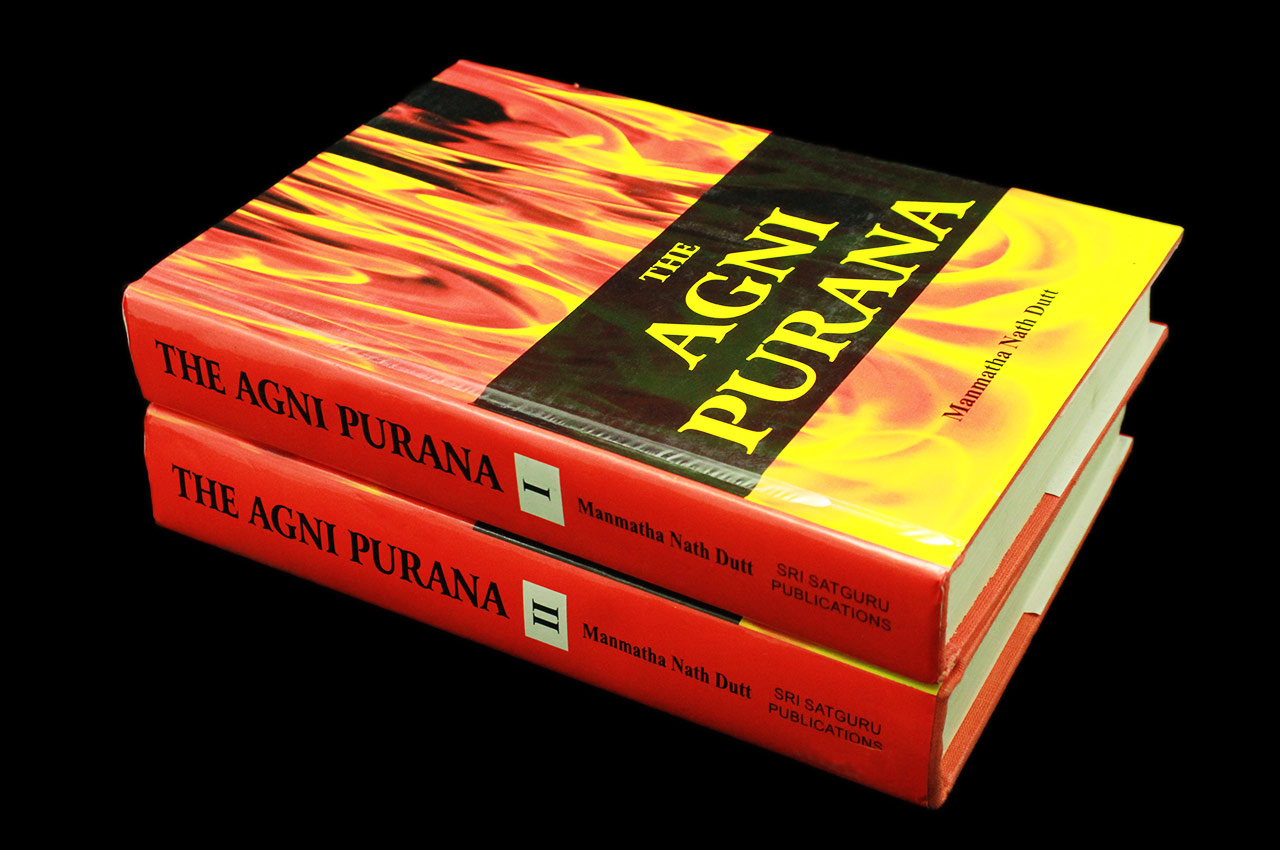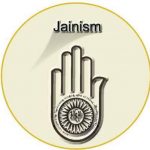Agni Purana: Universe Explained in Detail
Agni Purana, one of the major eighteen Puranas, contains descriptions and details of various incarnations (avatars) of Vishnu. It also has details account about Rama, Krishna, Prithvi, and the stars. It has a number of verses dealing with ritual worship, cosmology, history, warfare, and even sections on Sanskrit grammar, meter, law, medicine, and martial arts. Tradition has it that it was originally recited by Agni to the sage Vasishta.
Its composition is either dated to the 8th-9th century or the 10th-11th century
Agni Purana is the celebration of Agni the Fire God. He is the most revered deity among Hindu pantheons. Numerous hymns have been dedicated to Him in Vedas. Agni is closest to mankind among all divine icons because of its indispensability in daily life. That is why it is worshipped more at home than in temples. This scripture will introduce Agni with its multi-dimensional grandaunt from birth to death.

Hindu Puranas are the best fusion of Indian ethos and literature. They contain the triumphs and tribulations of mankind. The Eighteen Puranas relate the tales of duty and action, sins and virtues through the life and events of divine icons.
This Purana is basically a preaching to the sage Vashishth by Agni. In his turn, Vashishth narrated it to Vyasaji, who related it to Sutji. Ultimately, Sutji narrated Agni Purana to an assembly of the sages in Naimisharanya.
Starting chapters of the Purana describe about various incarnations of Lord, including Rama and Krishna. Other chapters describe about religious rituals especially those related to the worship of Lord Shiva. Many chapters have description about the earth, stars and constellations as well as the duties of the kings.

According to renowned scholar and the person who has translated Agni Purana into English, VDN Rao attached to Sri Kanchi Kamakoti Peetam: ‘Agni Purana’ is the essence of Vedas and Upanishads. It underlines the concept of ‘Advaita Brahma Gyan’ (Awareness of Unity of Almighty and the Self). In other words, Human Soul and the Supreme Power are one and the same. Also, the Purana emphasizes on the ritualistic aspects and religious practices related to temples, installation of idols, idol worship, ‘Japas’ (repetitive recitation of ‘Mantras’), ‘Homams’ and ‘Yagnas’, visits to ‘Thirthas’ (Holy Places including Rivers, Worship Spots and ‘Ashrams’ (places where Religious Leaders and Godmen seek retreat,) and so on. Spread over some 383 chapters over twelve thousand “Shlokas’, Agni Purana contains the gists of the Ten Avatars/ Incarnations of Lord Vishnu viz. ‘Matsya’, (Fish), ‘Kurma’ (Turtle), ‘Varaha’ (Boar), ‘Narasimha’ (Man/Lion), ‘Vamana’ (Dwarf), ‘Parasurama’, ‘Rama’, ‘Krishna’, ‘Buddha’ and Kalki. It also gives a detailed account of the Great Hindu Epics of ‘Ramayana’ and ‘Maha Bharata’ as also of ‘Harivamsa’.There are references in the Purana to Physical Features of World, Varnashrama and Ashrama Dharma, Temple Construction, Procedure of Pujas, Achaara Varnana, Tirtha Mahatmya, Power of Gayatri Mantra, Yoga Practice, Vedas and Puranas, Dhanurveda and Principles of Battle, Duties of Kings, ‘Brahma Gyan’, Bhagavat Gita and Yama ‘Gita’. Shri Lakshmi Stotra, Vishnu Panjara Stotra and Paapa Naasha Stora are other highlights. Being the Preserver of the Universe, Lord Vishnu takes to human form on earth occasionally whenever an evil force takes an extreme presence to upset the equilibrium of human existence and destroys the evil to re-establish and vindicate righteousness. The Lord had already taken to nine such ‘Avatars’ (incarnations) and the Tenth is in the offing as the Contemporary ‘Yuga’ (the fourth and final cycle of Time viz. ‘Kali’ Yuga, preceded by ‘Dwapara’ Yuga, ‘Tretha’ Yuga and ‘Kritha’ Yuga)) would be terminated.

The contents of Agni Puran
The presently available Agni Purana consists 383 chapters. The last chapter of the text gives a list of fifty topics discussed in the text. After the customary opening (chapter 1), the text describes the ten avataras of Vishnu in detail.
Chapters 2-4 deal with the Matsya, the Kurma and the Varaha avatars respectively.
Next seven chapters (5-11) are the summaries of the seven Kandas of the Ramayana.
Chapter 12 is a summary of the Harivamsha.
Chapters 13-15 narrate the story of the Mahabharata.
Chapter 16 describes Buddha and Kalki as the avatars of Vishnu.
Chapters 17-20 describe the five essential characteristics of a Purana.
Chapters 21-70 consist a discussion between Narada, Agni, Hayagriva and Bhagavan. These chapters deal with the religious bathing, construction of a Kunda (sacrificial pit), the Mudras (the positions of fingers during worship), the mode of worship of Vasudeva, Samkarshana, Pradyumna and Aniruddha, consecration of an image, architecture of a temple, iconography of the images, the worship of Salagrama, the rules for the installation of the images and repair of a temple.
The subject of chapter 71 is the worship of Ganesha.
Chapters 72-105 relate to the worship of the Linga and the several manifestations of Devi. These chapters also contain the discussions on the method of establishing Agni (sacrificial fire), Canda worship, Kapila worship and consecration of a temple.
Chapter 106 discusses about the Vastu related to the cities.
Chapter 107 is devoted to the creation of Svayambhuva Manu.
Chapter 108 is the Bhuvana-Kosha (the description of the universe).
Chapters 109-116 describe a number of the Tirthas.
Chapter 117 deals with the ancestral rites.
Chapters 118-120 describe the Puranic concepts on the geography of India and the other parts of the world and also the Puranic perceptions about the distances between various regions of the world.
Chapters 121-149 deal with various aspects of astronomy and astrology.
Chapter 150 deals with the periods of the Manvantaras and the names of the Manus.
Chapters 151-167 deal with the duties associated the different Varnas.
Chapters 168-174 discuss about the expiations for various kinds of sins.
Chapter 175-207 describe about the performances of a number of Vratas.
Chapters 208-217 describe about various religious gifts and vows.
Chapters 218-248 deal with the various aspects of the statecraft.
Chapters 249-252 discuss in details about archery and the weapons associated with it.
Chapters 254-258 discuss on the vyavahara (judicature and law). This part of the text is literally same as the Mitakshara.
The next chapters (259-271) deal with miscellaneous topics regarding the perusal of the Vedas.
Chapter 272 deals with the gifts to be made when the Puranas are read. This chapter contains a list of the Puranas and the number of verses each Purana contains.
Chapters 273-278 deal with the genealogy of the Puranic dynasties.
Chapters 279-300 deal with the various branches of medicine.
Chapters 301-316 deal with the worship of Surya and various mantras (chants), out of which chapters 309-314 deal with the mantras for worshipping of the goddess Tvarita.
In Chapters 317-326 Ishvara speaks to Skanda regarding the worship of Shiva’s ganas, Vagishvari, Aghora, Pashupata, Rudra and Gauri.
Chapter 327 consists the glorification of establishing a linga in a temple.
Chapters 328-335 summarise Pingala sutras on metrics and an unknown commentary on it.
Chapter 336 has rudimentary discussion about Vedic phonetics.
The subject of the next two chapters (337-337) is poetics and rhetoric.
Chapter 338 contains a list of the different types of Sanskrit drama.
Chapters 339-340 deal with the four ritis (styles) of displaying sentiments and emotions during acting and
Chapters 341-342 discuss about the actions and movements of the limbs of an actor and the definitions of the dramatic representations.
The discussions regarding the various figures of speech are found in chapters 343-345. The definitions found in these chapters are same as those of Kavyadarsha of Dandin.
The merits and demerits of a composition are discussed in chapters 346-347.
Chapter 348 consists a list of monosyllabic words.
The following chapters (349-359) deal with the rules of Sanskrit grammar, which is an abstract of the Chandra Vyakarana.
Chapters 360-367 are basically a lexicon on the pattern of the Amarakosha.
Chapters 369-370 consist the discussions on human anatomy. Chapter 371 describes various types of Narakas.
Chapters 372-376 deal with both the Raja-yoga and the Hatha-yoga.
The subject of the chapters 377-380 is the philosophy of Vedanta and the knowledge of Brahma.
Chapter 381 consists a gist of the Bhagavadgita.
Chapter 382 is a version of the Yamagita and
chapter 383 contains the verses describing the glorification of the Agni Purana.









